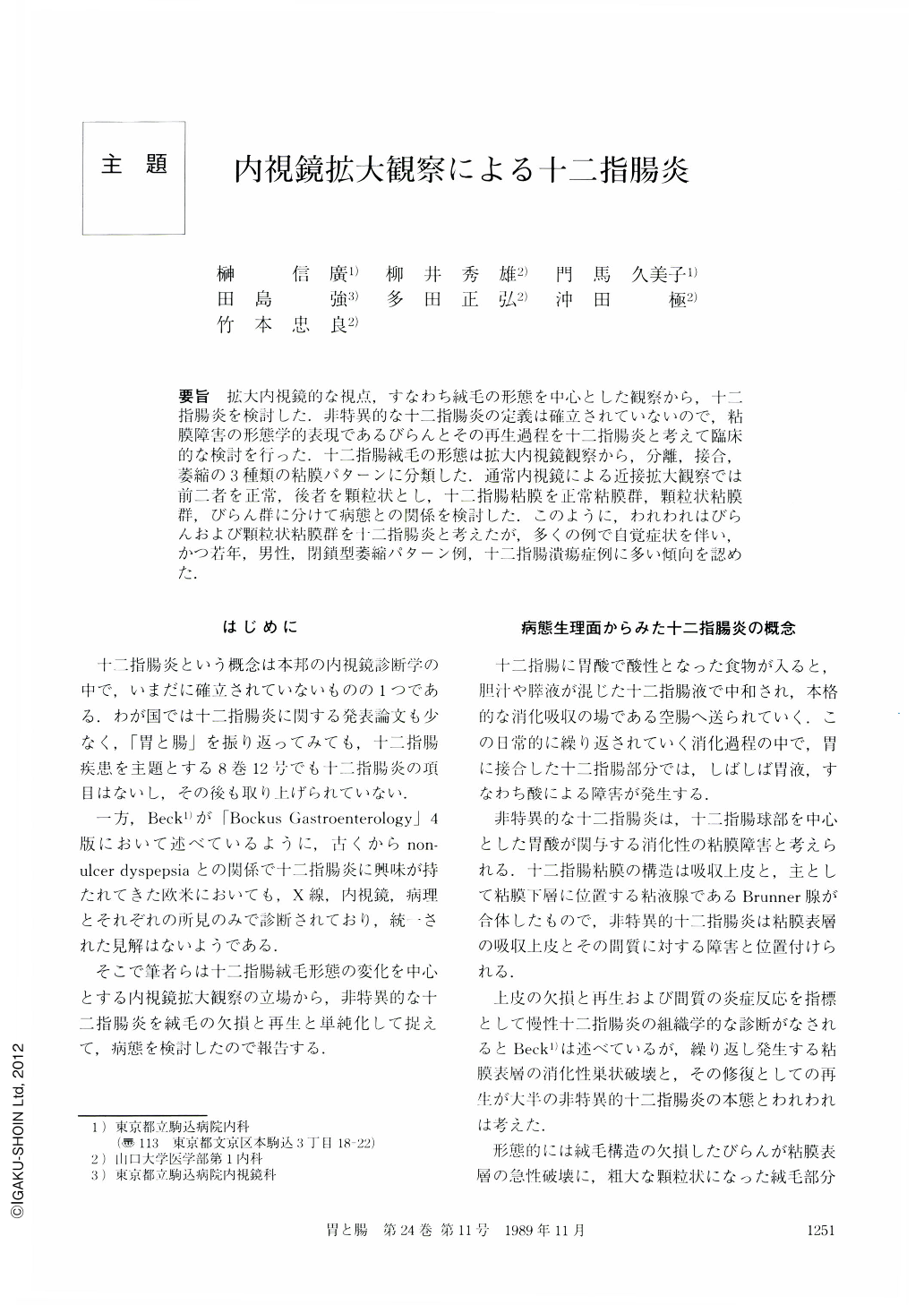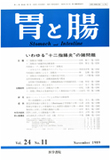Japanese
English
- 有料閲覧
- Abstract 文献概要
- 1ページ目 Look Inside
要旨 拡大内視鏡的な視点,すなわち絨毛の形態を中心とした観察から,十二指腸炎を検討した.非特異的な十二指腸炎の定義は確立されていないので,粘膜障害の形態学的表現であるびらんとその再生過程を十二指腸炎と考えて臨床的な検討を行った.十二指腸絨毛の形態は拡大内視鏡観察から,分離,接合,萎縮の3種類の粘膜パターンに分類した.通常内視鏡による近接拡大観察では前二者を正常,後者を顆粒状とし,十二指腸粘膜を正常粘膜群,顆粒状粘膜群,びらん群に分けて病態との関係を検討した.このように,われわれはびらんおよび顆粒状粘膜群を十二指腸炎と考えたが,多くの例で自覚症状を伴い,かつ若年,男性,閉鎖型萎縮パターン例,十二指腸潰瘍症例に多い傾向を認めた.
Endoscopic findings of duodenitis were studied by a magnifying observation, which was defined as a diagnostic endoscopic system used to observe various changes occurring in the pits and villi of the gastrointestinal tract. From magnifying endoscopic observations, the shape of duodenal villi were classified into 3 patterns; isolated pattern, connected pattern and atrophic pattern. On the other hand, duodenal mucosa were divided into 3 types; normal mucosa with fine villi (isolated and connected pattern), granular mucosa with deformed villi (atrophic pattern) and erosion by close-up observation using conventional endoscopes.
In this study, nonspecific duodenitis was defined as serial changes of mucosal destruction due to gastric acid and regeneration of the duodenal mucosa. Therefore, erosion and granular mucosa in our classification were considered as the endoscopic magnifying findings of nonspecific duodenitis. Clinically, patients with duodenitis frequently complained of epigastralgia and epigastric discomfort. A serial change from erosion to granular mucosa, and to normal mucosa was suspected after endoscopic follow-up observations with medical treatment. From the study of background factors, duodenitis was mainly diagnosed in younger and male patients with closed atrophic pattern.

Copyright © 1989, Igaku-Shoin Ltd. All rights reserved.


